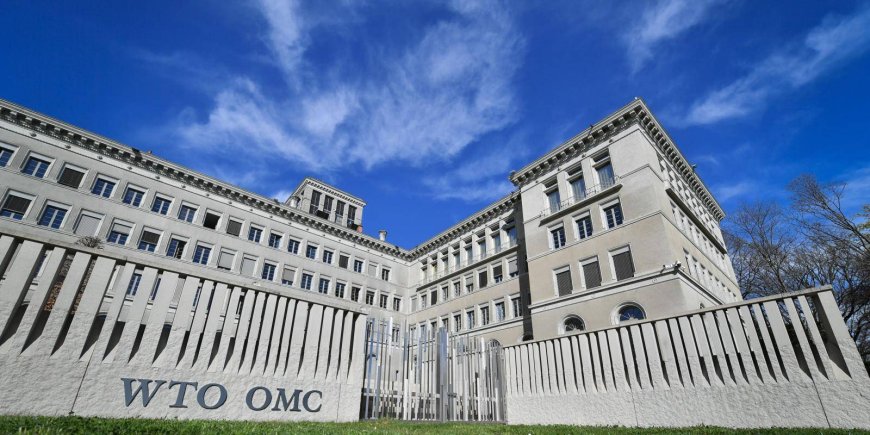India Takes WTO Route to Challenge U.S. Auto Tariffs, Threatens $725M in Retaliatory Duties
India files a WTO complaint over U.S. auto tariffs, proposing $725M in retaliatory duties. Resolution deadline is July 9. Read more on India’s trade strategy.

By Ronald Kapper
Published on: July 8, 2025
In a significant escalation of global trade tensions, India has formally notified the World Trade Organization (WTO) of its intention to impose retaliatory tariffs on the United States, following Washington’s move to hike import duties on foreign automobiles. The Indian government estimates the retaliatory value at $725 million, a figure it deems proportionate to the harm caused by the U.S. measures.
This action underscores the widening rift between two of the world’s largest democracies on key economic fronts, even as both nations continue to engage strategically in the Indo-Pacific and collaborate on technology and defense.
U.S. Tariff Move Sparks Global Alarm
On June 30, the Biden administration announced the reinstatement of Section 232 tariffs—originally introduced during President Trump’s term—targeting automobiles and auto parts from several countries, including BRICS-aligned nations such as China, Brazil, and South Africa. Though India was not initially targeted, concerns quickly mounted that Indian manufacturers could face indirect repercussions due to supply chain dependencies.
India has now preemptively challenged this move at the World Trade Organization, arguing that the U.S. tariffs are not consistent with WTO rules and violate the principle of Most Favoured Nation (MFN) treatment under the General Agreement on Tariffs and Trade (GATT).
“The proposed duties by the U.S. on imported automobiles lack justification under WTO disciplines and pose a direct threat to Indian exporters, especially in the electric vehicle and component segments,” a senior official from India’s Ministry of Commerce stated on Monday.
For in-depth details on the WTO dispute settlement framework, visit the official WTO Dispute Settlement Portal.
India’s Calculated Response: $725M in Suspended Concessions
As per documents submitted to the WTO, India intends to suspend tariff concessions and other obligations to the United States equivalent to the economic damage incurred. This includes a broad range of goods, from high-end motorcycles to capital equipment and agricultural imports.
India has given the U.S. until July 9 to address its concerns through consultations. If no satisfactory resolution is reached, retaliatory measures could come into force as early as August 1, 2025.
A similar move was seen in 2019 when India imposed retaliatory tariffs on 28 U.S. products—such as apples, almonds, and walnuts—after the U.S. withdrew India’s Generalized System of Preferences (GSP) status. That episode, covered in-depth by Reuters, bears strategic resemblance to today’s standoff.
Impact on Auto Industry and Trade Relations
India’s auto exports to the U.S. exceeded $1.6 billion in FY 2024, with major companies such as Tata Motors, Mahindra & Mahindra, and Bajaj Auto having significant stakes in the U.S. two-wheeler and electric vehicle (EV) market. These firms could face uncertainty if the tariff escalation proceeds unchecked.
Furthermore, the auto component industry, which contributes nearly 2.3% to India’s GDP, is closely linked to global supply chains. Any increase in input costs from the U.S. could lead to price hikes and reduced competitiveness.
According to a recent policy brief from the Confederation of Indian Industry (CII), retaliatory duties may serve as a temporary countermeasure but can affect long-term trade ties if not accompanied by dialogue and strategic recalibration.
Geopolitical Undercurrents and BRICS Concerns
The move comes at a time when India is working closely with BRICS nations to enhance trade cooperation outside of traditional Western alliances. At the recent BRICS+ Summit in Moscow, Prime Minister Narendra Modi stressed the importance of multilateralism and economic sovereignty, particularly in light of "unilateral sanctions and tariffs."
Analysts suggest that India’s challenge at the WTO sends a dual message: while it continues to engage constructively with the U.S. on strategic platforms like QUAD and IPEF, it will not hesitate to protect its trade interests on multilateral forums.
More on India’s evolving BRICS strategy can be found in this Bloomberg analysis.
What Happens Next?
As the July 9 deadline approaches, the ball is now in Washington’s court. If consultations fail, India is expected to trigger the WTO dispute panel mechanism and begin implementing countermeasures shortly thereafter.
For Indian exporters and investors, the next few weeks will be crucial. The Ministry of Commerce has advised stakeholders to stay updated through DGFT’s official updates and coordinate contingency plans for affected products and routes.
If unaddressed, this dispute could set the stage for broader trade realignments, particularly in sectors where India is emerging as a global manufacturing hub—from EVs to semiconductors.














